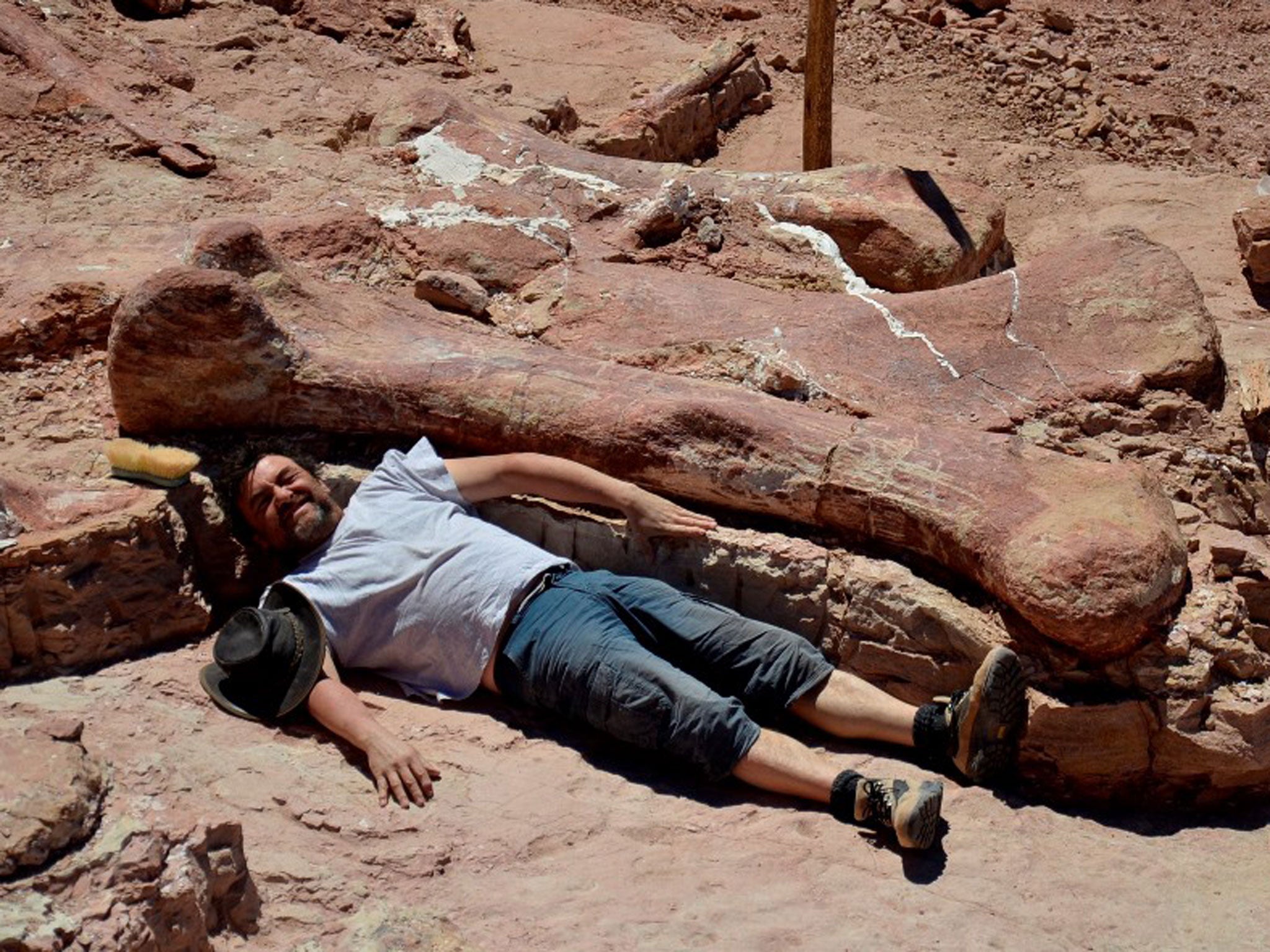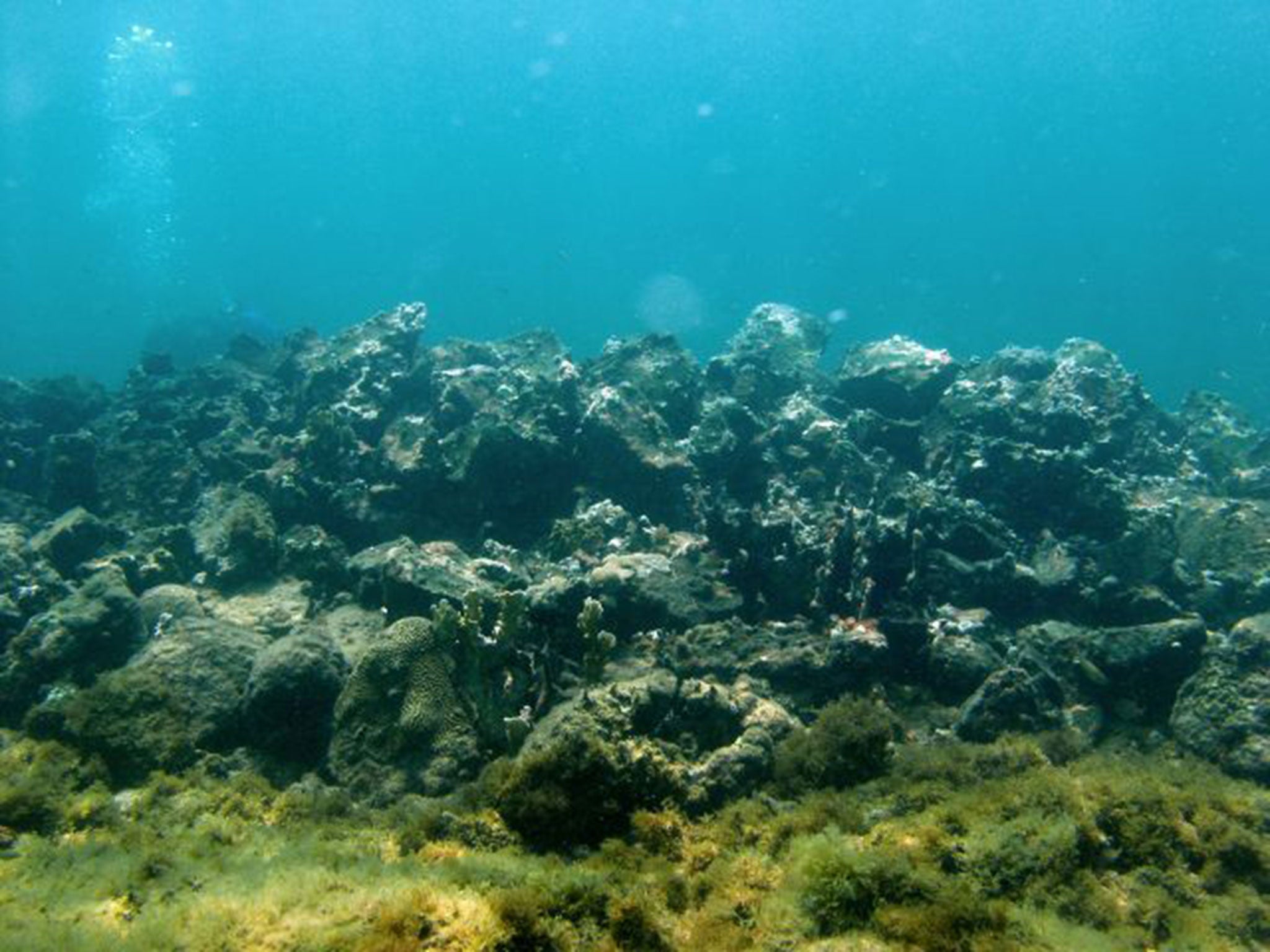The world's largest dinosaur? The wreck of Christopher Columbus? Nothing to see here...
The thrill of these discoveries is more mental than visual

Your support helps us to tell the story
From reproductive rights to climate change to Big Tech, The Independent is on the ground when the story is developing. Whether it's investigating the financials of Elon Musk's pro-Trump PAC or producing our latest documentary, 'The A Word', which shines a light on the American women fighting for reproductive rights, we know how important it is to parse out the facts from the messaging.
At such a critical moment in US history, we need reporters on the ground. Your donation allows us to keep sending journalists to speak to both sides of the story.
The Independent is trusted by Americans across the entire political spectrum. And unlike many other quality news outlets, we choose not to lock Americans out of our reporting and analysis with paywalls. We believe quality journalism should be available to everyone, paid for by those who can afford it.
Your support makes all the difference.Brought to light this month, in a blink-worthy archaeological one-two, were the bones of a new dinosaur and the body of an old ship. The dinosaur – which doesn’t yet have a name – belongs to the titanosaur family, and would have trundled around Patagonia some 90 million years ago. In a word, it is big, perhaps the biggest ever: the girth of a thigh-bone suggests a full height of around 40m.
The ship, found off the coast of Haiti, is apparently the Santa Maria, the vessel that in 1492 brought Christopher Columbus and his men to what they believed was the edge of Asia. Neither discovery – reddish bones or barnacled hull – is much to look at from the available photographs, though when the skeleton is hung together, and the boat dredged up from the ocean floor, people will no doubt gee themselves up to pay a visit.
I will go, but this is how I plan to avoid heading to the museum café after half an hour with my jaw yet to drop. The key thing to admit is that, since you’ve seen Jurassic Park, and one or two dilapidated boats, the purpose of any visit is not to treat the eyes. A bone is a bone is a bone, and your imagination may lack the kind of horse-power needed to turn a few planks of the Santa Maria into a seaworthy craft. Instead, what you are there for is simply to stand as close as possible to an object that, in its way, shattered the snow-globe of European thought.
Columbus’s journey split the World into two portions, ‘New’ and ‘Old’, at least to Western eyes. But it took another 300 years for the consensus to develop that another, much older world had existed, one ruled by reptilian beasts so tall they could look down on a church steeple.
When the femur of a T-Rex like Megalosaurus was unearthed – in England – in 1676, an Oxford University professor said it must belong to a gigantic man. Structures of contemporary thought could not easily bend to the belief that another continent existed, or entirely different orders of nature. Columbus steadfastly called his ‘discovered’ lands India. Thomas Jefferson sent Lewis and Clarke into the Northwest in the hope that they would discover a living mastodon – then known from its remains as an incognitum. Despite a keen interest in unexplained bones, he was adamant that that nature could not let any beast die out. Only 60 years later would British scientist Richard Owen stake the claim that “terrible lizards” had lived – and expired – long ago.

The mental recalibration asked of humankind by the discovery of a new species of dinosaur is minimal, and we always knew the Santa Maria once sailed the oceans blue. But a visit to see either one prods us to recall a time when man was absolutely sure the world existed in a certain way, and was absolutely wrong about it. The joy is in having the rug pulled away – and knowing it could happen again.
Join our commenting forum
Join thought-provoking conversations, follow other Independent readers and see their replies
Comments